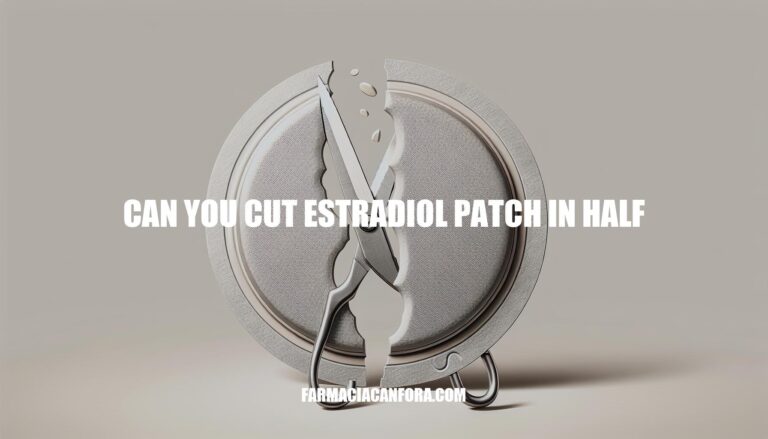


Cutting an estradiol patch in half is a topic of interest for many using hormone therapy. People might consider this to adjust their dosage more precisely or to save costs. However, it’s generally not recommended because cutting the patch can disrupt the controlled release of the hormone, leading to uneven dosing and potential side effects. Always consult with a healthcare provider before making any changes to your medication regimen.
Estradiol patches are a form of hormone replacement therapy used primarily to treat symptoms of menopause, such as hot flashes, night sweats, and vaginal dryness. They work by delivering estradiol, a form of estrogen, directly through the skin into the bloodstream, bypassing the digestive system.
The patches are designed to release a controlled amount of estradiol over a specific period, usually several days. This controlled release mechanism ensures a steady level of the hormone in the body, which helps manage menopausal symptoms effectively.
Cutting an estradiol patch in half is not recommended because it can disrupt the controlled release mechanism. The patch is engineered to release the hormone at a consistent rate, and altering its size can lead to uneven dosing, reducing its effectiveness and potentially causing side effects. Always use the patch as directed by your healthcare provider.
Cutting an estradiol patch in half can lead to several safety issues:
Uneven Hormone Distribution: Estradiol patches are designed to release a consistent dose of hormone over time. Cutting the patch can disrupt this mechanism, leading to uneven hormone distribution. This can cause fluctuations in hormone levels, potentially resulting in suboptimal therapy outcomes.
Skin Irritation: Cutting the patch may expose the adhesive layer, increasing the risk of skin irritation or allergic reactions. The adhesive is meant to stay intact to ensure proper adhesion and minimize skin issues.
It’s generally recommended to consult with a healthcare provider before making any changes to your hormone therapy regimen.
Cutting an estradiol patch can significantly affect its effectiveness. Estradiol patches are designed to deliver a consistent dose of hormone over a specified period. When you cut the patch, you disrupt this controlled release mechanism, leading to uneven hormone distribution. This inconsistency can result in fluctuating hormone levels, which may cause suboptimal therapy outcomes and potential side effects.
Maintaining a consistent hormone release is crucial for effective hormone therapy. Any alteration, such as cutting the patch, compromises this consistency and can lead to unpredictable results. Always consult with a healthcare provider before making any changes to your hormone therapy regimen.
Cutting an estradiol patch in half is generally not recommended. These patches are designed to deliver a precise, controlled dose of hormone, and cutting them can disrupt this mechanism, leading to uneven hormone release and potential side effects.
Experts and healthcare providers advise against altering the patch. Instead, they recommend consulting with your doctor if you need a dosage adjustment. Your doctor can suggest alternatives like switching to a different patch strength or using another form of hormone therapy.
Always follow your healthcare provider’s guidance for safe and effective use of estradiol patches.
Cutting an estradiol patch is generally not recommended due to potential issues with uneven hormone release and compromised effectiveness. Here are alternative methods to adjust estradiol dosage without cutting the patch:
Switch to a Different Patch Strength: Consult your healthcare provider about switching to a patch with a higher or lower estrogen concentration to better match your dosage needs.
Use Other Forms of Hormone Therapy:
Adjust Patch Application Frequency: Your healthcare provider might suggest changing how often you apply the patch to better control hormone levels.
Always consult with your healthcare provider before making any changes to your hormone therapy regimen to ensure safety and effectiveness.
Cutting an estradiol patch in half is not recommended due to potential issues with uneven hormone release, compromised effectiveness, and safety concerns such as skin irritation.
Instead, consult your healthcare provider about alternative methods to adjust estradiol dosage, including:
Always follow your healthcare provider’s guidance for safe and effective use of estradiol patches.